Ngorongoro Crater is the world’s largest inactive, intact, and unfilled volcanic caldera. Located in northern Tanzania within the Ngorongoro Conservation Area, the crater measures about 19 km in diameter and covers an area of roughly 260 square kilometers. It forms a unique, self-contained ecosystem teeming with diverse wildlife.
Carved by a massive volcanic explosion around 2 to 3 million years ago, Ngorongoro Crater is a natural amphitheater unlike any other on Earth. Its fertile floor supports an extraordinary concentration of wildlife, including Africa’s densest population of lions, rare black rhinos, and massive bull elephants.
The crater is part of the greater Ngorongoro Conservation Area, a UNESCO World Heritage Site that balances human, wildlife, and archaeological heritage. With its breathtaking views from the rim and thrilling game drives across the crater floor, it offers one of the most rewarding safari experiences in Africa.
Africa’s Garden of Eden
Ngorongoro Crater is a wildlife haven protected within towering walls. Known for its stunning beauty and dense game, it’s the best place in Tanzania to spot the Big Five in one day, including rare black rhinos.
260 km² (crater floor)
300+ animals
All year round
High-density wildlife & Big Five sightings
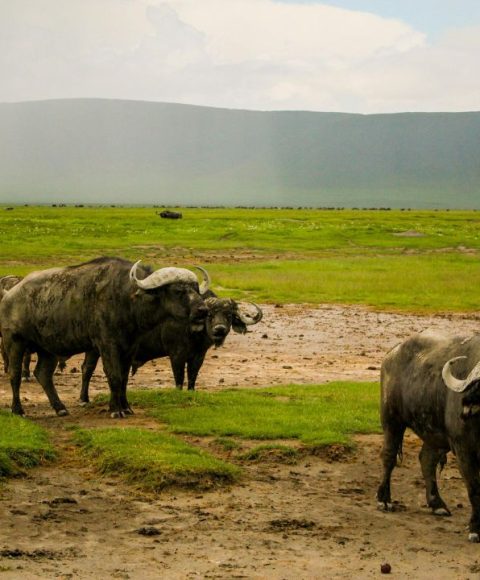
Expansive open plains dominate the crater floor, home to zebras, wildebeests, lions, and other grazers. These grasslands offer exceptional game viewing throughout the year.
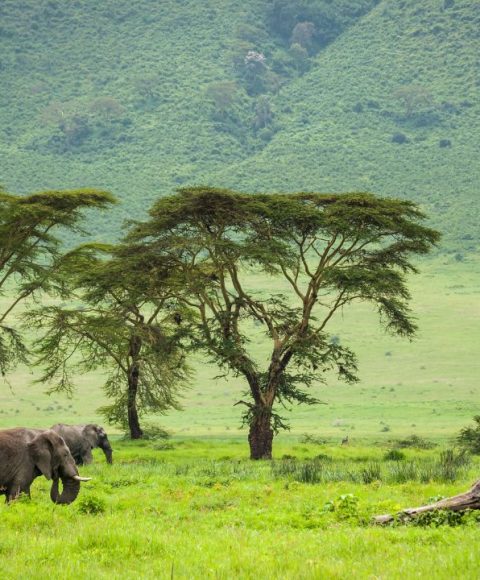
A lush acacia forest on the southern crater floor, it shelters elephants, bushbucks, vervet monkeys, and leopards. It’s a hotspot for birdwatchers and big game encounters.
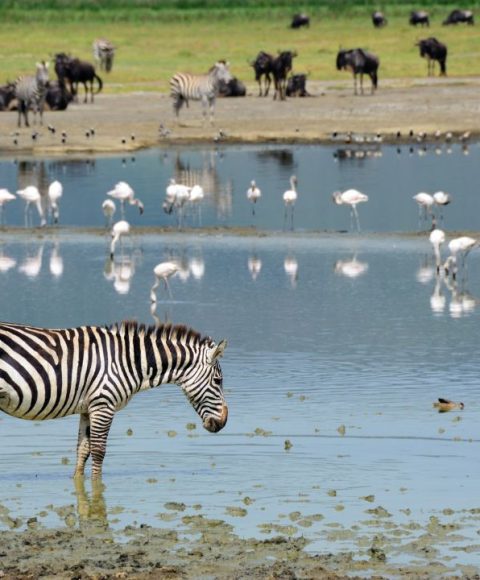
These marshy areas attract hippos, elephants, and large numbers of birds. Lions and hyenas often linger nearby, drawn by grazing prey and fresh water.
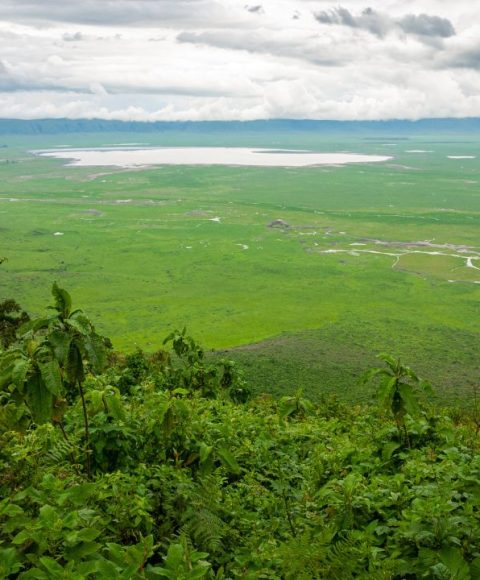
A shallow, seasonal lake at the center of the crater, known for attracting flamingos and other water birds, especially during the wet season.
Ngorongoro Crater is one of the most wildlife-rich areas in Africa, hosting over 30,000 large mammals. You’ll find lions, buffaloes, elephants, black rhinos, and leopards, completing the Big Five in one setting. It’s also a stronghold for hyenas, jackals, serval cats, and bat-eared foxes.
Herds of zebras, wildebeests, and gazelles roam freely, while the swamps and forests offer sanctuary to hippos, elephants, and over 500 species of birds. Flamingos, crowned cranes, storks, vultures, and augur buzzards thrive here, making it a birder’s paradise too.
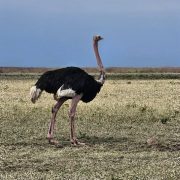
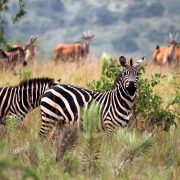
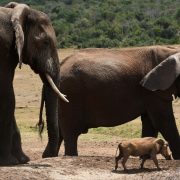
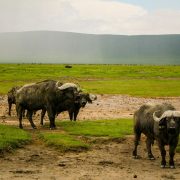
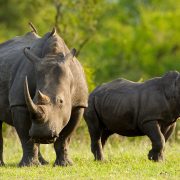
Ngorongoro’s high altitude (2,200–2,400 meters on the rim) means it’s cooler than other parts of Tanzania. Dry season (June to October) provides excellent visibility and game viewing. Wet season (November to May) brings lush vegetation and dramatic skies. Mornings and evenings can be chilly year-round, especially on the rim.
June to October & Mid-December to February
March to May & November to early December
Ngorongoro Crater is a massive volcanic caldera located in northern Tanzania. It was formed when a large volcano collapsed over two million years ago, creating a rich and enclosed ecosystem now home to a vast array of wildlife.
The crater is about 19 kilometers (12 miles) in diameter and covers an area of approximately 260 square kilometers (100 square miles). The rim stands around 600 meters (2,000 feet) above the crater floor.
Ngorongoro is home to the Big Five—elephants, lions, leopards, buffaloes, and black rhinos—along with cheetahs, hyenas, jackals, wildebeests, zebras, flamingos, hippos, and over 500 bird species.
It’s a year-round destination. The dry season (June to October) is best for wildlife visibility, while the green season (November to May) offers lush scenery and great birding. Early morning game drives are especially rewarding.
No, but it’s nearby. Ngorongoro lies within the Ngorongoro Conservation Area (NCA), adjacent to the Serengeti. Together, they form part of the greater Serengeti ecosystem and Northern Safari Circuit.
No accommodations are located on the crater floor. However, there are several lodges and campsites on the crater rim, including Ngorongoro Crater Lodge, Rhino Lodge, and Ngorongoro Sopa Lodge, offering stunning views and quick access to game drives.
Yes. It’s an excellent destination for families due to its high game density and short driving distances. Some lodges offer family rooms and activities tailored for children.
From Arusha, it’s about a 3.5–4 hour drive via well-maintained roads. You can also fly into Lake Manyara Airstrip or Seronera (in Serengeti) and connect by road. Many safaris include Ngorongoro as part of a circuit tour.
Main activities include crater floor game drives, visits to Maasai bomas, hiking on the crater rim, and exploring nearby sites like Empakaai and Olmoti craters or the Olduvai Gorge archaeological site.
Yes. Visitors are only allowed to descend into the crater once per day and must exit by 6 PM. Off-road driving and walking safaris on the floor are not permitted to protect the ecosystem and ensure safety.
It is a multi-use protected area that combines wildlife conservation, pastoralism, and archaeology. It spans over 8,000 square kilometers and includes Ngorongoro Crater, Olduvai Gorge, Empakaai, Olmoti, and parts of the Serengeti ecosystem.
The area is inhabited by Maasai pastoralists, who live in traditional villages and continue grazing livestock. Their presence is integrated into conservation policy, making NCA unique among wildlife reserves.
Olduvai Gorge is a world-famous archaeological site located within the conservation area. It is considered the “Cradle of Mankind”, where some of the earliest hominid fossils were discovered by the Leakey family.
No walking safaris are permitted on the crater floor due to the high density of dangerous wildlife. However, guided hikes are allowed on the crater rim and in the surrounding highlands like Olmoti and Empakaai.
The Ngorongoro Conservation Area Authority (NCAA) promotes a unique model of coexistence between people and wildlife, combining community development, strict ecological protection, and sustainable tourism.
Yes, Ngoitokitok Springs is a designated picnic site where visitors can enjoy meals during their crater tour. It’s a scenic spot near a hippo pool, but be aware of opportunistic birds and animals.
Absolutely. Ngorongoro is typically included in Tanzania’s Northern Circuit, often combined with Lake Manyara, Tarangire, and Serengeti National Park for a comprehensive safari.
The crater rim rises to about 2,200–2,400 meters (7,200–7,900 feet) above sea level. The altitude contributes to cooler temperatures and dramatic landscapes.
Ngorongoro is one of the best places in East Africa to see black rhinos in the wild, although they can be elusive and sightings are often from a distance.
With its stunning scenery, abundant wildlife, rare species, cultural heritage, and accessible location, Ngorongoro Crater offers an all-in-one safari experience unmatched in Africa.
To help us direct your query, tell us a little about your question below. Call
Explore Trekking Adventure Trusted Tanzania Tour Operator for Kilimanjaro Climbs & Wildlife Safaris Who We
ENQUIRE NOW Safari in national parks: Ngorongoro Crater and Serengeti National Park This 4-day safari
ENQUIRE NOW Safari in national parks: Ngorongoro Crater and Serengeti National Park This 3-day adventure
ENQUIRE NOW Safari in national parks: Ngorongoro Crater and Serengeti National Park This 5-day family
ENQUIRE NOW Safari in national parks: Ngorongoro Crater Tarangire, Lake Manyara and Serengeti National Park

Explore Trekking Adventure (ETA) offers expertly guided treks, authentic cultural experiences, and responsible travel. With local knowledge, quality gear, and personalized service, ETA ensures safe, unforgettable journeys across East Africa.